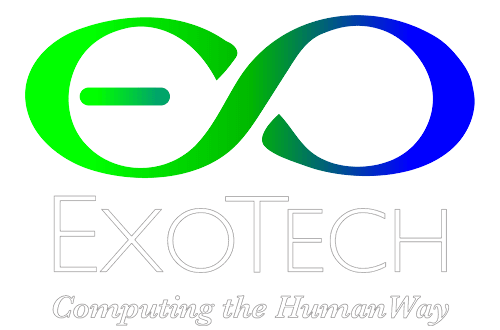
Part 41
These blogs are virtually the first I’ve ever written and I have to say that, compared with the many other forms of writing I have attempted over the years, it’s proved to be an exhilarating exercise in free-form writing. Most of my writing career has been involved with much more structured forms, apart from poetry, which was my previous method of liberating words from the straightjackets of formal formulae. Apart from dabbling with a couple of stories, both long and short, in my late teens and early twenties, my first paid assignment was the writing of film, and later TV commercials.
Previously, when I was still in Britain and working for Associated TeleVision (ATV) and (ABC) as a Studio Manager from early1958 to the end of 1959, I had the huge pleasure of working for Richard Lester. He was an American and at the time the youngest TV director in Britain. We did a comedy show called “After Hours” featuring the comedian Michael Bentine with Shirley Bassey as the resident singer.
It was a whacky show with some hysterically funny moments. Mike Bentine was one of the original Goons (other key members were Peter Sellers, Spike Milligan and Harry Secombe) but soon left to do his own thing. Shirley Bassey took great delight in greeting me with the words “Hello you white South African racist bastard” – then to show it was not seriously intended, she would throw her arms around me and give me a big hug.
Anyway, the point of this anecdote is that Dick Lester was considered to be one of the brightest stars of British television productions. I was therefore stunned when one day he said he was leaving television to go to direct TV commercials. I wondered if it was because of the extra money he could make, but he explained it was because he intended to make feature length movies and had decided that the discipline required for putting across a message in a thirty-second TV commercial was the best way to learn how to tell a story succinctly and without waffling.
Dick shot his first short film over two Sundays while still with ABC. It was an insane comedy called The Running Jumping & Standing Still Film with Peter Sellers and Spike Milligan offering their services for free.

This in turn led to a distinguished movie career for Dick. The Beatles saw his mad movie and assigned him to direct their two pictures A Hard Day’s Night and Help! Dick went on to become one of the hottest directors of the 1960s with such movies as The Knack and How to Get It, A Funny Thing Happened on the Way to the Forum (adapted from the stage show), The Three Musketeers and The Four Musketeers. Superman II and Superman III were both successful big-budget pictures that he directed in the 1970s. Dick’s approach to the necessary economies of storytelling on film was something I have never forgotten as I moved on to writing and directing documentaries, then later as a writer of television drama and comedy series and finally full-length features for cinema release. When I first attempted to write for movies, and for that matter television dramas, I hopelessly overwrote the dialogue until I discovered the basic rule, which was that no speech by an actor should be more than four to six lines at a time. I was told very firmly that if a script reader or a producer starts reading a new screenplay and sees more than a maximum of six lines of dialogue in a single speech, they will almost certainly throw the screenplay into the trash can. They usually have dozens of screenplays waiting to be read, so the slightest thing that irritates them gives them the excuse to toss it.
I hate to think how many fine stories get lost that way but, of course, they’re right in that movies are an essentially visual medium. The writer should always find a way to express something visually rather than have lengthy dialogue to explain it.
In the early days of the first talking movies, they were essentially a stage play on film with all the theatrical devices that worked in the theater. They were at first incredibly melodramatic before actors came to grips with downplaying their performances for the screen instead of having to project to the back of a theater. At the end of a scene, there would usually be a fade to black before the next scene and dialogue was often way overlength.
As cinema audiences became more and more educated in their understanding of cinematic techniques, movie makers employed numerous shortcuts that audiences could follow without being confused. For example, if a person made a journey on screen in the early days, we would see many shots of that journey that did not move the storyline forward at all. Hence, today we may see a person get in a car in one shot and then see the car arrive in the very next shot. Cinema and TV audiences switch off mentally or even change channels on TV if each scene does not drive the story forward.
A classic example of this was a nice little movie made in South Africa which caught the attention of Hollywood producers, called Lost in the Desert. The version release in the US had a number of clever edits that made the picture even more watchable. In one scene, the father of a young boy who flies with his uncle to the desert regions of Namibia is a pianist who gives a concert whilst his son leaves on the trip. In the South African version, we sit through almost two minutes of the father sitting at the piano to play the first movement of Rachmaninoff’s First Piano Concerto, before we cut to the plane with his son in it. In the US version, the father plays just the first two bars of the Concerto before cutting to the plane. A huge improvement!
There is a distinct parallel between the evolution of the movie industry and the evolution of computing. The early computers were enormously cumbersome monsters with limited applications. Gradually, a combination of improved technology as well as technologically savvy operators who became better educated in the use of computing, sped up the whole process. Finally, with the arrival of the digital age, computer hardware made an exponential leap into the future, but sadly the software has pretty well painted itself into a corner. Current computing has so far been unable to break through to the next level where systems should have become much simpler and far more user-friendly as well as technologically advanced. On the other hand, movie technology and its audiences are moving forward together exploring new worlds of digital creation. That’s why ExoTech with its ExoBrain has opened the door for an entirely new and far easier way of computing. An ExoBrain can finally unglue its users from the increasingly unmanageable complexities of programming.
Even as I’ve been typing this, I suddenly found that lines I was writing had started to double space. In trying to resolve this, in my typically technophobic way, I clicked on formatting by mistake and then spent nearly an hour trying to unformat it. This simply wouldn’t happen with ExoTech and I would never have suffered from an Exofit as I did an hour ago!

